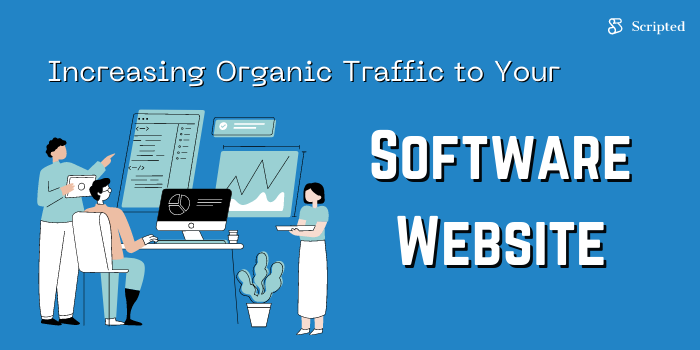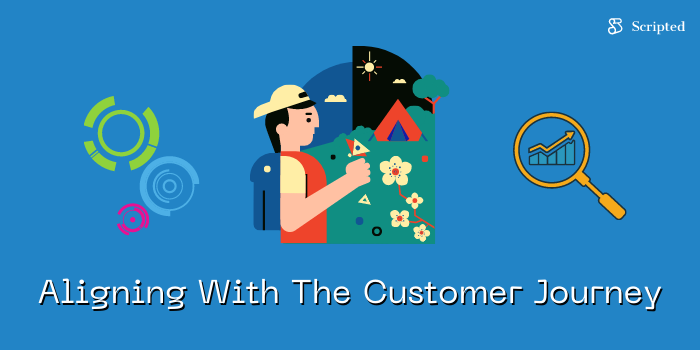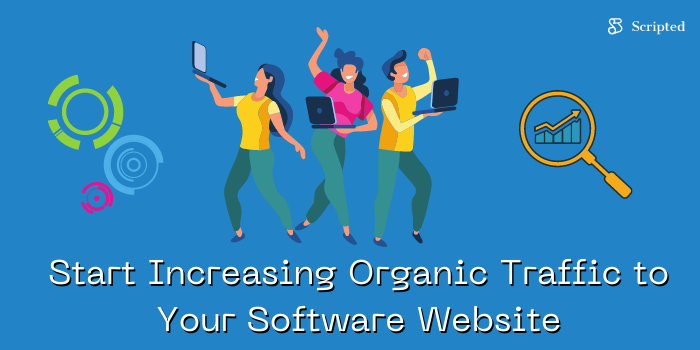- Blog Home
- Marketing Agencies
- Jubilee Heutmaker
- Increasing Organic Traffic To Your Software Website
Increasing Organic Traffic to Your Software Website

Regardless of the software you're offering, software websites continue to find themselves in an extremely competitive space, one that's being disrupted by ever-increasing SaaS offerings and rapidly transformed by evolving eCommerce tools and regulations. Yet, one issue remains front-and-center, and paramount to sustainable success: Increasing organic traffic.
Evaluating Your Existing SEO
Before you can work to increase traffic with the introduction of a revitalized content marketing strategy, it's of crucial importance that you take the time to evaluate your existing content and previous SEO efforts. This will allow you to make the most of the content you've already created through expansion and re-optimization while the metrics can also help you analyze what went wrong in previous attempts.
Compare High-Performing and Low-Performing Content
Analyze your content based on the organic traffic it's generating, average time on page, other signs of engagement, and the conversions it's generating. Sort your content based on these metrics, with high-performing content being posts and pages that drive a lot of traffic and/or conversions and low-performing content being the opposite.
Once you have sorted your content like this, you'll be able to quickly identify great opportunities for improvement. Namely, you'll want to start by re-optimizing and expanding upon your high-performing content that checks only one box--that is, content that drives traffic but not a ton of conversions and content that drives conversions but not a ton of traffic. Software like Google Analytics can help you identify these metrics.
From there, you'll go down the list, moving on to lesser-performing content and making improvements where you see fit, by expanding, adding new sections, incorporating relevant keywords, embedding videos and images, and inserting links. You'll also want to follow all of the best practices we'll discuss later in this guide to help you make the most of existing content.
Assess Your On-Page SEO Performance
If you think your organic traffic is driven solely by the content you produce, you'd be wrong. Your site could be generating the best content in the world amongst all software websites, but you'd still struggle to rank if key elements of your on-page SEO performance aren't adding up.
The first of the on-page SEO elements you need to assess is page speed. Google puts a great deal of value on how quickly a page loads, and they even have webmaster tools dedicated to helping website owners evaluate and improve the speed of their website, just look to PageSpeed Insights.
In addition to how fast your site loads, Google also cares deeply about how well your site loads across devices. They call this "responsiveness," and an unresponsive website is sure to harm your rankings. Look to design your website with responsiveness in mind so that it looks and functions properly across all devices.
Lastly, another major element of on-page SEO performance is accessibility, and it's all too often overlooked. To meet search engine's accessibility guidelines, include alt tags for your images, use lots of sub-headings, and ensure that colors have the proper amount of contrast so they are easy to view, even for those who are visually impaired.
Taking care of these seemingly small elements will do wonders in increasing your website rankings while also helping you offer the best possible experience to users.
Identify Gaps in Your Content
Whether or not you've worked with a keyword strategy in the past, your efforts to increase organic traffic will now require you to create one. However, you can't base a keyword strategy around anything unless you first know which keywords your existing content is targeting and which keywords your existing content needs to add.
In general, you can start your keyword research with an analysis of your existing content. Identify the keywords you already rank for. Then, identify the most popular keywords your audience is searching for and the keywords your competitors are ranking for. With those lists, combine the keywords and remove redundancy.
Condense like keywords into groups, and make sure that content targeting any keyword in a given group is expanded to include all the semantically-related keywords in its group. From there, take any groups that don't yet have content created around them, and that's the beginning of your content strategy.
Likewise, check your social media pages--are you linking to your content and creating an interactive conversation for followers? This plays into your website ranking, too, as search engines like to see a lively community of fans.
Rethinking Your Content Strategy
Your content strategy is more than what you publish, it's where you publish, when you publish, and how you engage your audience while offering valuable information. Let's breakdown each of these elements in greater detail.
Consider Your Brand's Persona
Your brand's persona defines who your brand is--friendly, humorous, caring, wise, authoritative, exclusive, or any number of qualities you choose to assign to it. Creating a brand persona can be quite a fun exercise, but when you realize its implications, you'll likely find it intimidating.
After all, your brand's persona doesn't just impact how you write, speak, and present things to your customers, but it also directly impacts how people perceive your company. Humor may work for some, but it may turn others off. Meanwhile, whereas some visitors appreciate a caring, almost motherly figure, it's out of place in many niches.
Deciding on your brand's persona is no easy feat and it requires a deep understanding of who your audience is and what they are seeking. Oftentimes, audiences identify best with a persona that represents who they aspire to be. In the case of a professional seeking out a new software, the best persona may be a likable, humble, and trustworthy one, but that's up to your brand to decide.
Keep Your Style Consistent
Selecting a brand persona is only a small part in establishing a recognizable and reputable brand. In order to meet your objectives, you have to keep your tone and style consistent with your persona across all the content you publish and every time you interact with a customer.
This is especially true when working on new content as part of your content strategy. Tone may very depending on the information you're offering or the scenario you're communicating in, but style should always stay true to your brand. As such, if you find your audience isn't responding well to your style, it's time to rethink your branding.
If you're considering re-branding, look to competitors for inspiration and guidance regarding what your audience may respond best to.
Aligning With The Customer Journey
Another major component of a successful content strategy that drives organic traffic is alignment with the customer journey.
Understand The Journey's Phases
The customer journey is most simply broken down into phases of awareness, consideration, and decision, but there's a good chance that your software website can analyze the average life-cycle of a lead and get much more granular with the phases.
Once you know what the phases of your customer's journey are, you can then begin to align your content, calls-to-action, and outreach efforts with each phase of the journey, helping to drive more conversions and even generate more clicks.
Work to Match Search Intent
Whenever you create a new piece of content or optimize an old one, it's essential that you check to make sure the content and its meta data is aligned with the corresponding phase in the customer journey, which you may hear called "search intent."
By asking yourself, "Who is reading this and what do they want to know?" you're able to answer their query in the most relevant manner, which directly contributes to better rankings. Considering the reader's phase in the journey will also help you craft a call-to-action and incorporate internal links that help drive them to the next phase, rather than scaring them off with a generic "schedule a consultation" or "start your free trial" offer that falls on deaf ears.
Tailor Content to Pain Points
Another benefit of creating your content around the customer journey is that you're able to tailor your content to a customer's pain points, allowing you to address concerns, questions, and hurdles that would otherwise hold them back from moving to the next phase. This has a direct impact on both engagement and conversions.
Software companies that are able to offer their content in such a structured manner find that audiences respond much better to the calls-to-action and offers they give them, because a visitor is left with the impression that you truly understand their needs, and that you can solve their problems. Best of all, it only really takes a bit of planning to pull it all off.
Start Increasing Organic Traffic to Your Software Website
While evaluating your existing content and finding the right tools to strategize and plan around keywords and other fundamentals may seem daunting, the work is bound to pay off as it helps your software website drive organic traffic and conversions in a brand new, sustainable way. Of course, you already have a lot on your plate.
If you're worried that you can't give your content strategy your all while also juggling your other responsibilities, it's time to turn to Scripted. Scripted's professional writers can help your software website climb the search engine results pages through meaningful, valuable, and tailored content that helps drive traffic and conversions for your brand.
Interested in learning more about how Scripted can grow your software website with ease? Start a 30-day free trial today and see for yourself all of the benefits Scripted's tiered memberships and feature-rich platform have to offer your business.
Published by Jubilee Heutmaker on Tuesday, December 21, 2021 in Marketing Agencies, Organic Traffic, Software.




